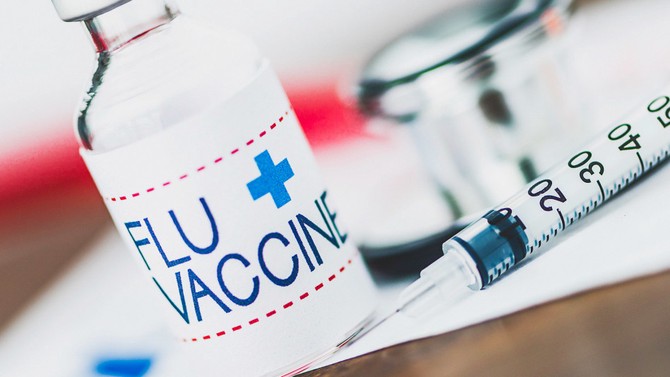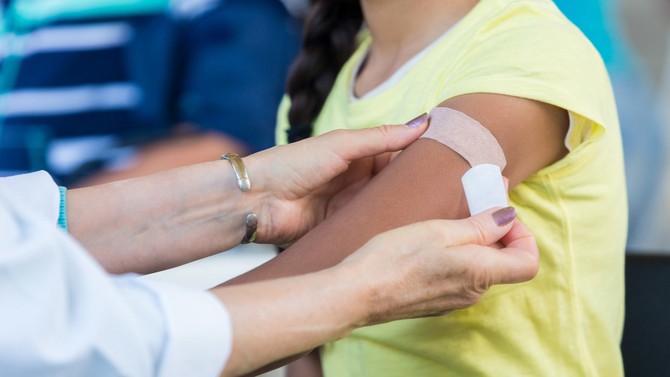You May Need to Get These 3 Immunizations Again
Do you need another shot this year?

Illustration: Anna Parini
You may think you’ve had all the immunizations you’ll ever require, but the guidelines are constantly being fine-tuned— for the good of us all. Every year, the Centers for Disease Control and Prevention updates its immunization schedule; the past few years have brought notable changes, and there may be more to come. Keep reading to see if you'll need to roll up a sleeve anytime soon.
What’s new: As of last October, a Tdap shot is recommended for pregnant women as early as possible during their last trimester. Experts also advise everyone age 11 and older to get the shot if they haven’t already, especially if they’re around newborns.
Why: Scientists are now realizing that the Tdap vaccine wears off faster than once hoped (as does its childhood equivalent, DTaP). Four years after getting Tdap, only 30 to 40 percent of people are fully protected from pertussis, which is likely one reason cases have spiked in recent years. The vaccine is still the best defense we have against this highly contagious respiratory disease, which can cause coughing fits violent enough to crack a rib. Pertussis is especially dangerous for babies too young to receive the shot: About half of infected infants under a year old need to be hospitalized.
Tdap
Guards against tetanus, diphtheria, and pertussis (a.k.a. whooping cough).What’s new: As of last October, a Tdap shot is recommended for pregnant women as early as possible during their last trimester. Experts also advise everyone age 11 and older to get the shot if they haven’t already, especially if they’re around newborns.
Why: Scientists are now realizing that the Tdap vaccine wears off faster than once hoped (as does its childhood equivalent, DTaP). Four years after getting Tdap, only 30 to 40 percent of people are fully protected from pertussis, which is likely one reason cases have spiked in recent years. The vaccine is still the best defense we have against this highly contagious respiratory disease, which can cause coughing fits violent enough to crack a rib. Pertussis is especially dangerous for babies too young to receive the shot: About half of infected infants under a year old need to be hospitalized.

Photo: CatLane/iStock
Influenza
Protects against the flu; offered as a shot and, in recent years, as a nasal spray.
What’s new: The nasal spray, while sometimes available as a painless alternative to the needle, was not recommended for use in the U.S. last year and may not be this year, either.
Why: Data from the past few flu seasons revealed that the spray, which contains a weakened live form of the influenza virus, didn’t work as well as the shot with the inactive virus. Scientists are investigating potential causes for the disparity, says Sandra Fryhofer, MD, an internist in Atlanta and member of the CDC’s influenza work group. The flu vaccine’s ability to prevent illness can vary from season to season. Look for updates about this year’s recommendation soon at cdc.gov/flu and plan to get your shot by the end of October, according to the CDC.
What’s new: The nasal spray, while sometimes available as a painless alternative to the needle, was not recommended for use in the U.S. last year and may not be this year, either.
Why: Data from the past few flu seasons revealed that the spray, which contains a weakened live form of the influenza virus, didn’t work as well as the shot with the inactive virus. Scientists are investigating potential causes for the disparity, says Sandra Fryhofer, MD, an internist in Atlanta and member of the CDC’s influenza work group. The flu vaccine’s ability to prevent illness can vary from season to season. Look for updates about this year’s recommendation soon at cdc.gov/flu and plan to get your shot by the end of October, according to the CDC.

Photo: Steve Debenport/iStock
Mumps
Usually delivered as part of the MMR (measles, mumps, rubella) vaccine.
What’s new: Experts are considering whether evidence warrants giving people a third dose of the MMR vaccine during an outbreak.
Why: In the past ten years or so, the majority of mumps cases were part of large outbreaks in densely populated places like college campuses, so scientists are studying how to help keep these eruptions under control. Last year alone there were more than 5,800 mumps cases—the most in a decade. The MMR vaccine is about 78 percent effective at preventing mumps with one dose and 88 percent effective with two; not much is known about the effect of a third. A recently formed mumps work group is expected to make recommendations by February 2018.
What’s new: Experts are considering whether evidence warrants giving people a third dose of the MMR vaccine during an outbreak.
Why: In the past ten years or so, the majority of mumps cases were part of large outbreaks in densely populated places like college campuses, so scientists are studying how to help keep these eruptions under control. Last year alone there were more than 5,800 mumps cases—the most in a decade. The MMR vaccine is about 78 percent effective at preventing mumps with one dose and 88 percent effective with two; not much is known about the effect of a third. A recently formed mumps work group is expected to make recommendations by February 2018.
Published 08/01/2017

